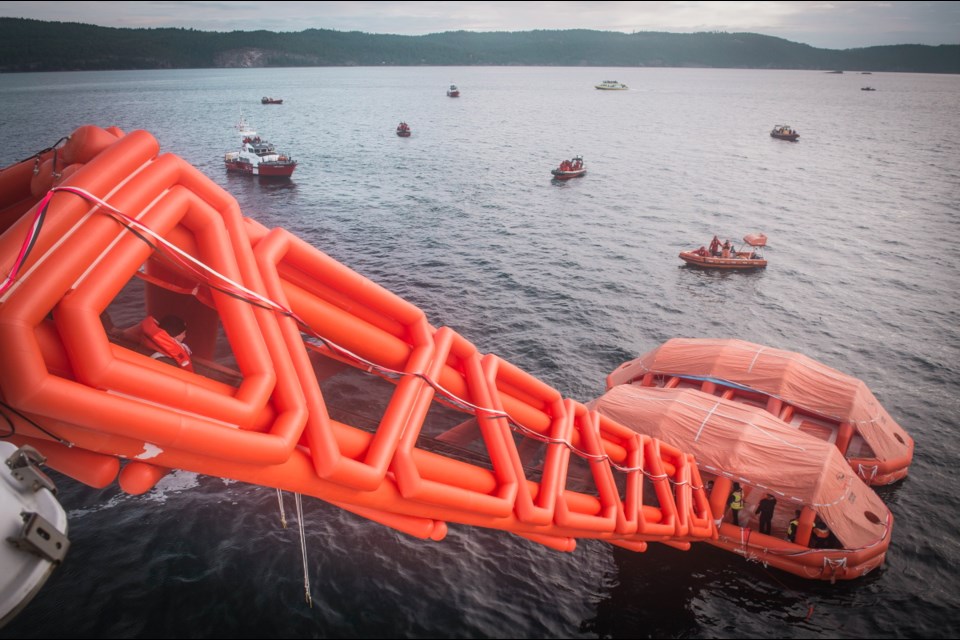Almost 100 volunteers, some covered in fake blood, slid down an orange emergency slide and into a life-raft during a Canadian Coast Guard drill on Wednesday.
The scenario: 97 people forced to abandon ship when an onboard fire threatened to sink a B.C. Ferries vessel and spill fuel into the water.
“It was very realistic and it forced folks to react, adjust, apply assets and report back,” said Roger Girouard, assistant commissioner for the Canadian Coast Guard’s Western region.
The drill involved the B.C. Ferries vessel Coastal Renaissance, the military, police, paramedics, search-and-rescue technicians and emergency management experts in dozens of vessels and six aircraft stationed in Trincomali Channel between Salt Spring Island and Galiano.
Search-and-rescue technicians, U.S. and Canadian coast guard personnel and Canadian Forces members jumped into action to assess people’s injuries, and the coast guard searched the shoreline for a missing 10-year-old girl.
Eventually, everyone was accounted for and the life-raft was taken to shore, triggering a triage by B.C. Ambulance paramedics and Emergency Management B.C. personnel.
As Girouard flew over the exercise in a helicopter, he saw a zig-zagging dance of hovercraft, fast rescue vessels and lifeboats below. First responders could see dozens of curious faces peering out a window at Fernwood Elementary as the helicopter landed on the nearby shore.
The coastal disaster drill will continue today, when the focus will shift to containing the fire on the ferry and preventing the vessel from sinking.
The Canadian Coast Guard will take responsibility for managing fuel that has leaked into the water, Girouard said, while Transport Canada ship inspectors will determine the level of damage to the vessel.
Managing the transition from search-and-rescue to pollution-response is crucial, he said.
“How do you transition and get the search-and-rescue boats out of there and allow the pollution response boats in? How do you get a community to shift from counting possible victims from the ferry to walking the beach and looking for pollution on the shore?” he asked.
“It’s boots and brawn and bouncing on the water, but it’s also a very intellectual scenario.”
The last time a marine emergency plan was tested was ahead of the 2010 Winter Olympics, Girouard said, but that scenario didn’t include pollution management.
“It’s been one of the best examples of multiple agencies contributing to an exercise,” he said.



